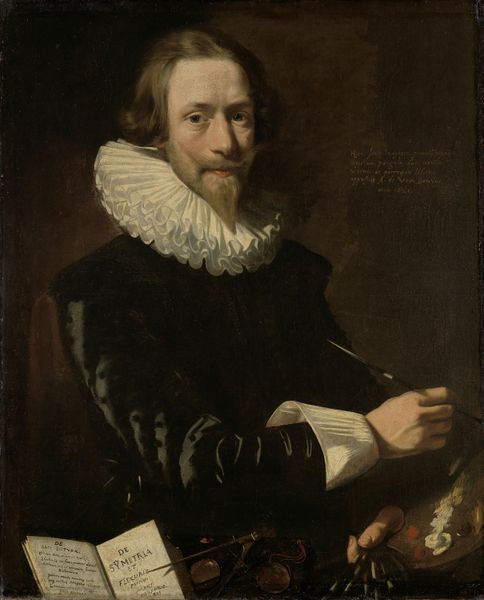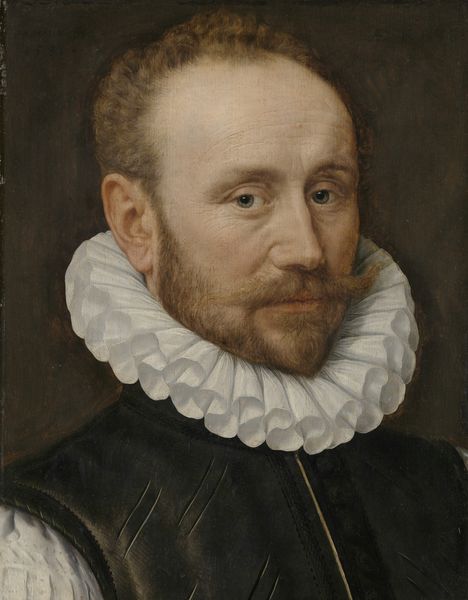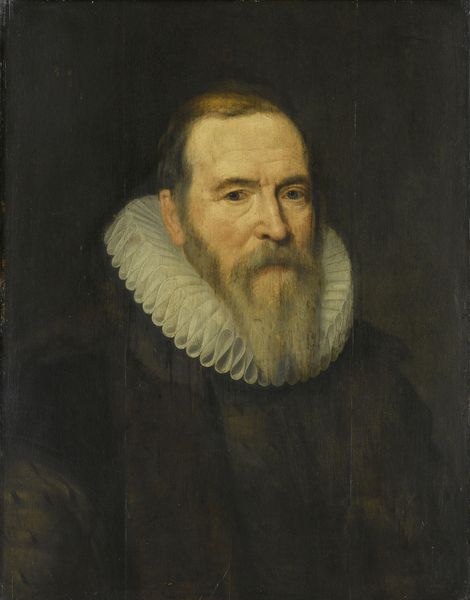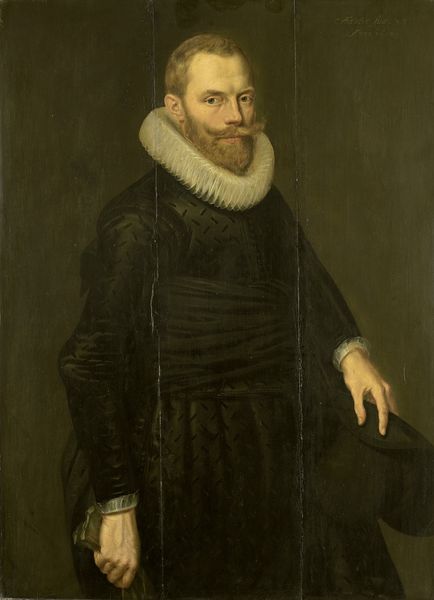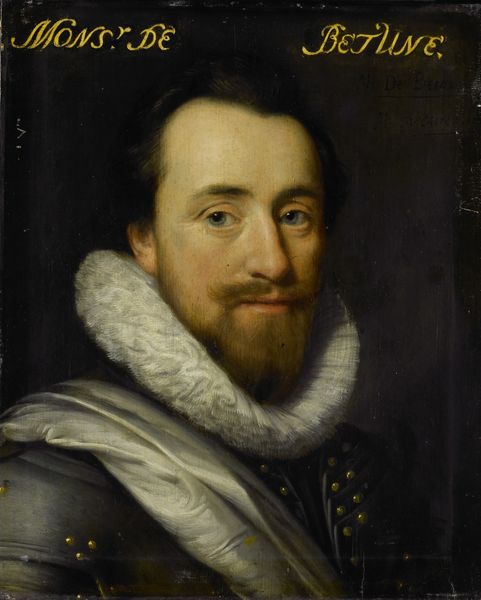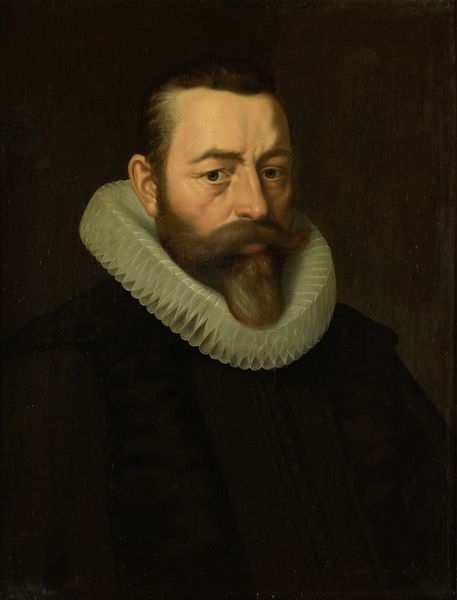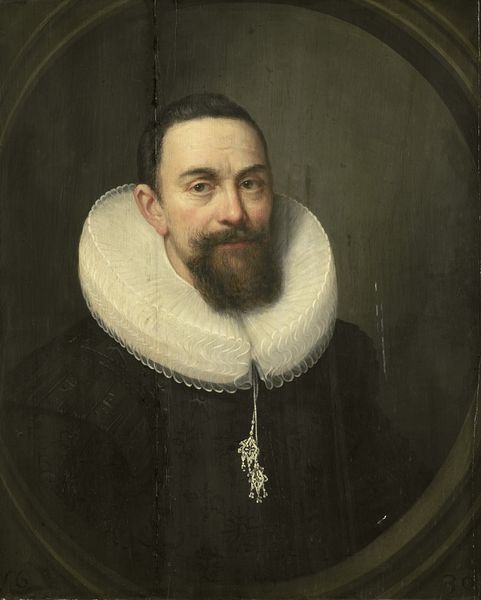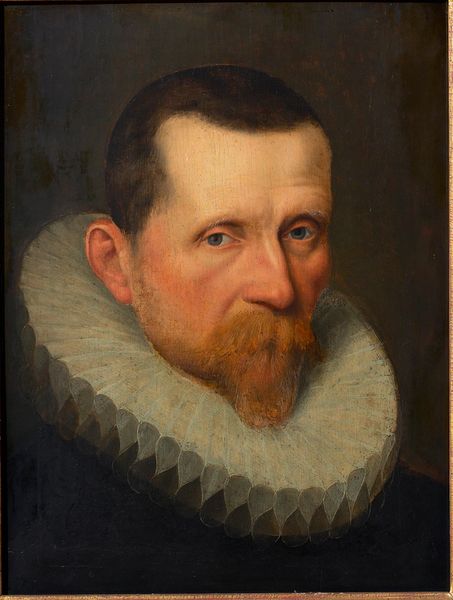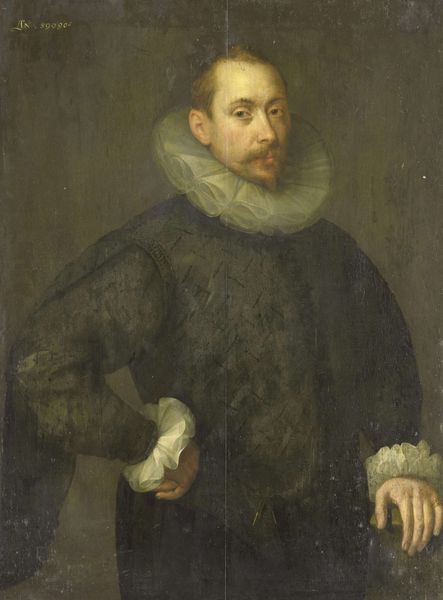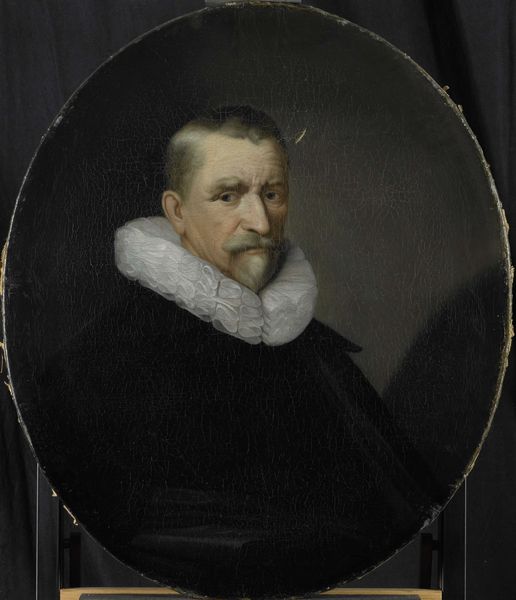
oil-paint
#
portrait
#
baroque
#
dutch-golden-age
#
oil-paint
#
figuration
Dimensions: support height 63 cm, support width 55 cm, outer size depth 6.6 cm
Copyright: Rijks Museum: Open Domain
Editor: So, this is Michiel Jansz. van Mierevelt's "Portrait of Hugo de Groot," from 1631, oil on panel. It feels so formal and almost…stuffy. What are your thoughts on this portrait? Curator: The key here is the materials and the labor that went into producing this image. Think about the oil pigments: where did they come from? How were they processed? And what does it mean that only a certain class of people could afford such things, or commission a portrait using them? Editor: I hadn't really considered that aspect. The sheer expense of creating art. So the choice of oil paints becomes a statement in itself? Curator: Exactly! It's about access and power. Even the canvas preparation and the artist's time represents significant investment. Then there’s the clothing, the ruff...these are all signifiers of wealth and status, carefully constructed and presented through material means. Editor: So, the artist isn’t just depicting a person, they're participating in constructing a certain image of that person? Is Mierevelt making a commentary here? Curator: Perhaps. Or perhaps he’s simply fulfilling a commission, participating in the existing social and economic structures. But by examining the materials, we can begin to unpack those structures. Look at how meticulously the ruff is rendered, almost fetishized. What kind of labor went into creating that lace, and who benefited from it? Editor: It’s easy to get caught up in the individual and forget the larger systems at play. I guess by looking closely at what things are made of, we learn whose hands were involved in making them, too. Curator: Precisely! It challenges us to see art as embedded in social relations, production, and consumption. The materiality itself tells a story. Editor: That's definitely changed how I'll look at portraits from now on. Thanks!
Comments
No comments
Be the first to comment and join the conversation on the ultimate creative platform.

